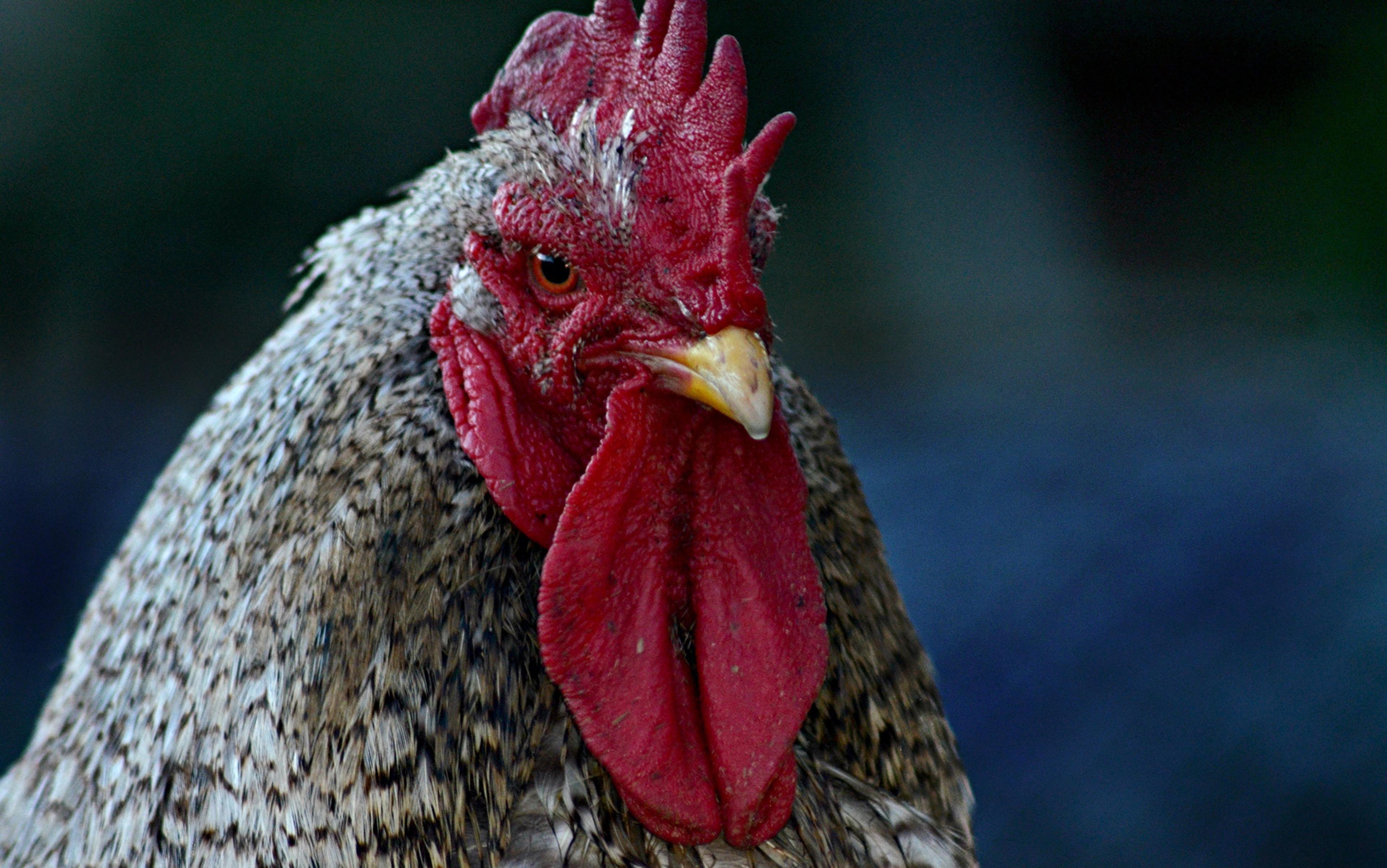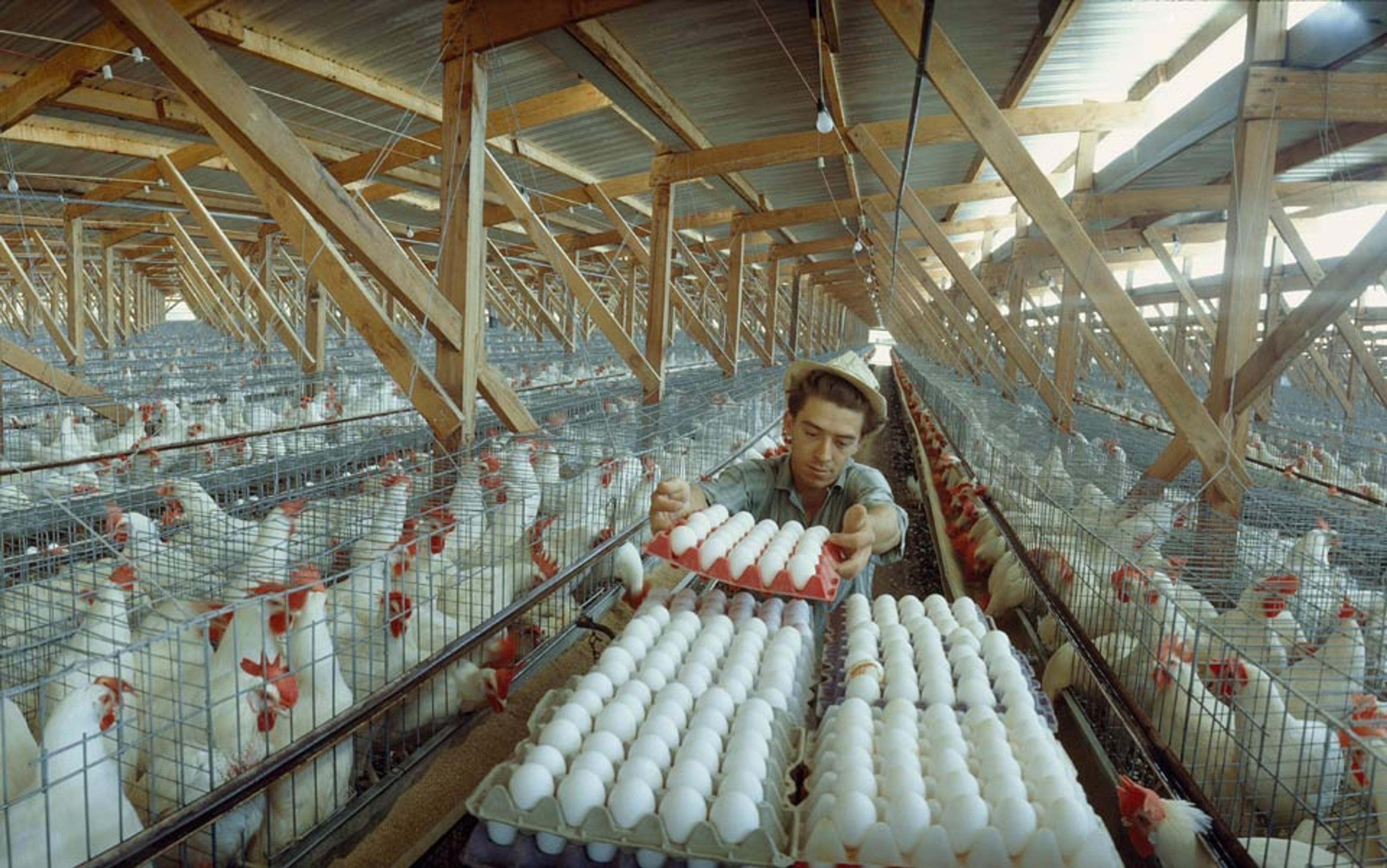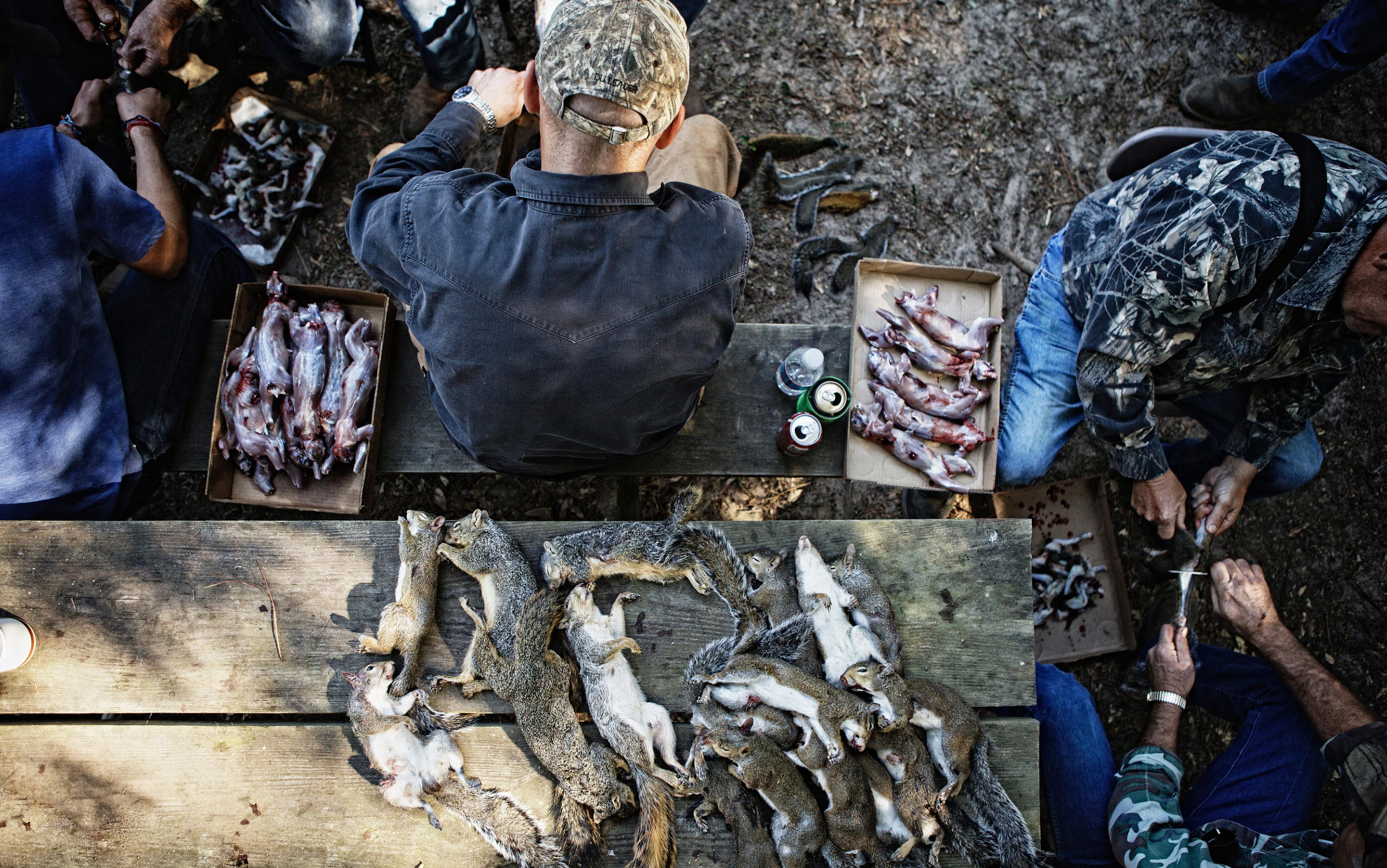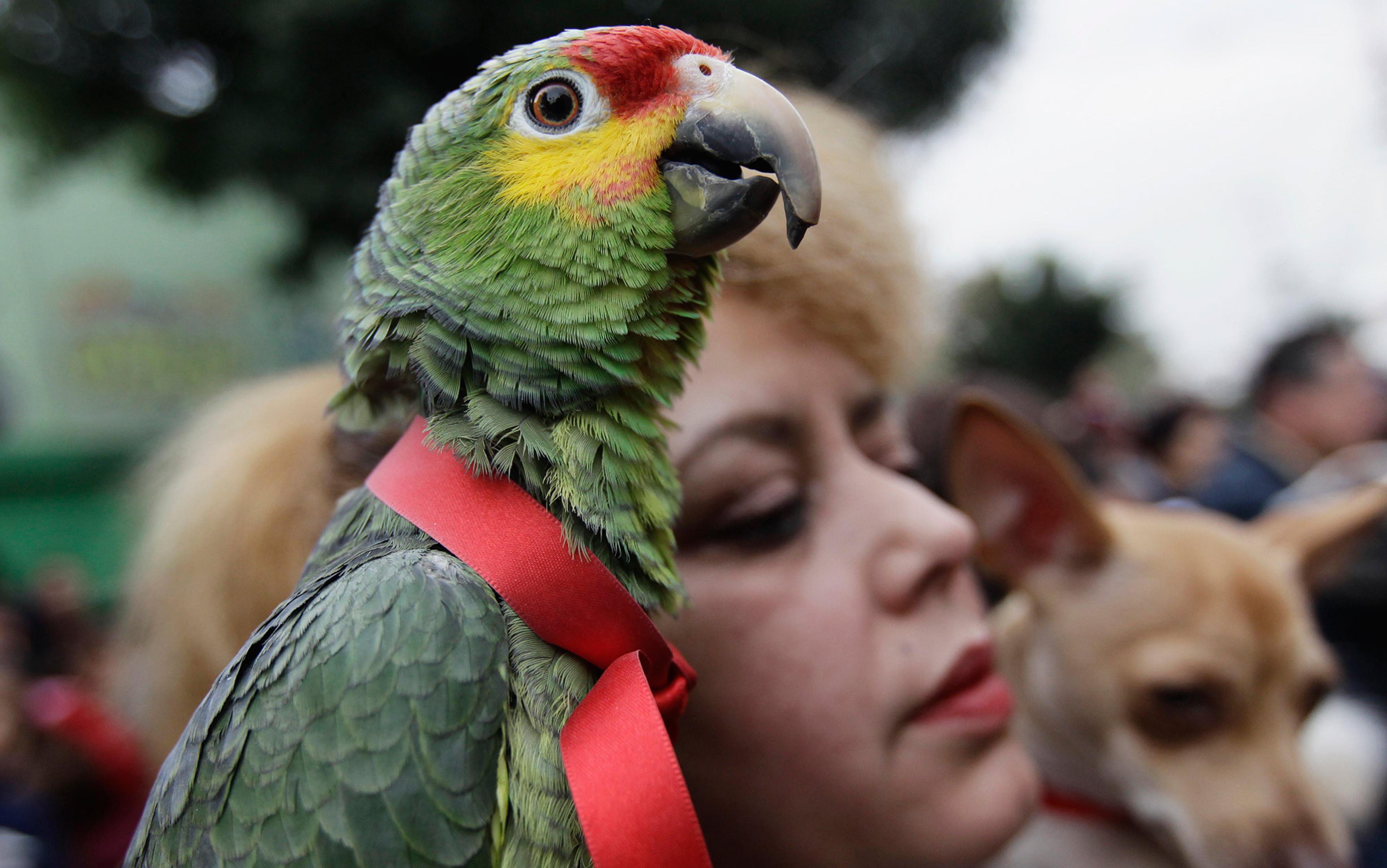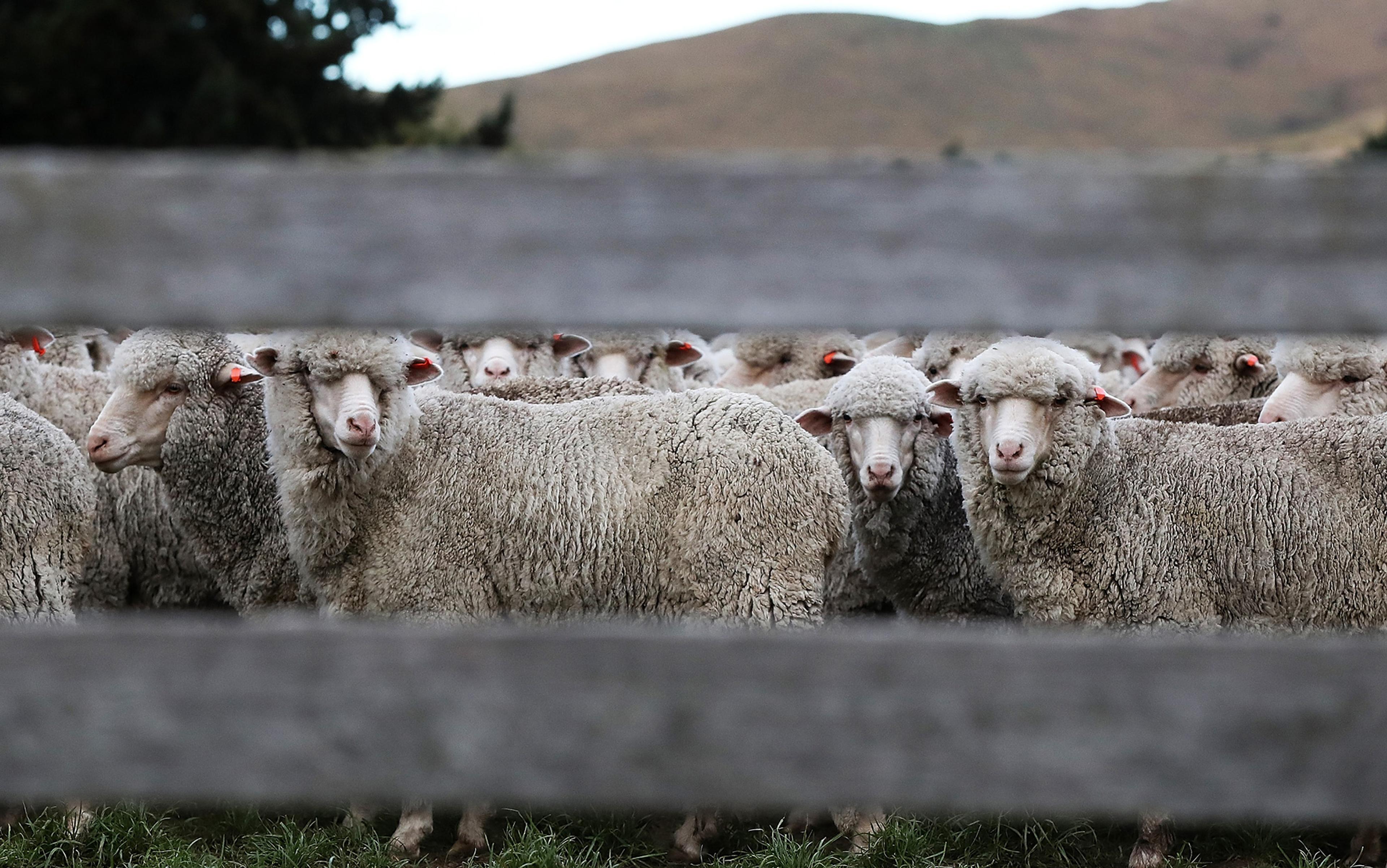My neighbour James brings us his rooster, carrying him across the street in his arms. I watch from the dining room window where I sit working, watch the rooster’s succulent comb tremoring lightly, his long yellow legs dangling below the crook of James’s arm. They are smooth, still spurless, and remind me of a rubber chicken’s legs. The bird looks placid, like a trusting cat at ease, like he might drift off to sleep in James’s embrace. I feel a pang of guilt, sorry that the rooster will soon meet the blade and, if chickens believe such things, his maker.
Luckily, for me, my husband has agreed to do the slaughtering.
I go out and meet James. It’s a sunny day in late summer, hot, and we stand awkwardly for a moment in my driveway.
‘Well, here’s Stanley,’ James says.
‘You’ve named him?’ I say, trying not to sound like I’m criticising. James nods, explains how Stanley, sweet at first, developed a bad habit of chasing and menacing his five-year-old grandson. Across the street, James’s chickens roam in what was once a home daycare yard. Stanley started flying over the chain-link fence. Then the hens followed. They’d end up in the road or in an unhappy neighbour’s yard. And Stanley didn’t crow only at first light, but throughout the day, his hoarse call a crackling single note at first, quickly gaining syllables and volume.
‘It just got to be too much, you know?’
I nod, because I do. And I shouldn’t judge – we’d named our rooster, too, even though his name was Rooster, and it’s been about a year since we slaughtered him.
I marvel at Stanley’s plumage, clay-coloured with a hint of blue, darker bars lining his back and wings. He is lean and gangly, a teenager still, probably feather-light. He won’t make much of a meal. I know that if I were to feel for it, I’d find the hollow of his crop at the base of his throat and the washboard of his ribs beneath his wings. Maybe this, his youthful frailty, is why he sits so trustily in James’s grip. If it weren’t for Stanley’s bad habits, he could have had a good life with James.
I go inside to get a pet carrier to put Stanley in until my husband returns. ‘I hadn’t even thought of that,’ James says, and I wonder how he didn’t think of it, wonder what he assumed he’d do with Stanley when he brought him to our house. Maybe he was flustered, or rushing to get Stanley out before his grandson came over so he wouldn’t have to explain what he was doing. But mostly, it seems like he just didn’t think of it at all. I see this as a testament to how removed we are from slaughter, with what have come to be seen as the unsavoury details of backyard poultry-keeping. James probably didn’t think through bringing his rooster to his neighbour’s to be slaughtered because he’d never considered that he’d ever have to think through slaughtering a rooster. When he got the chickens, he probably didn’t think of having a rooster at all. His rooster, like so many unwanted ones of backyard chicken-keepers, was an accident. He’d bought six chicks at an agricultural store who’d been sexed immediately after hatching, but the act of sexing day-old chicks is hardly a science, or at least it’s one with a large margin of error.
James declines my offer to bring him chicken soup, not wanting to have to explain it to his grandson: ‘Now, remember Stanley…?’ he jokes, envisioning the conversation that would ensue over Stanley soup. I tell him I get it. We say goodbye. I park Stanley in the shade on our back patio and he peers with a beady eye through the holes of his carrier. I wonder what he knows, what he suspects, if anything. Chickens hate different: anything out of the ordinary is a signal of a threat – a coop with freshly changed shavings is a reason to baulk; a different food bowl is subject to wary scrutiny; a fresh dusting of snow on the ground enough to keep the birds cooped up for half a day.
Each time Stanley crows from the pet carrier, my heart contracts a little with guilt and, home and alone, I dissect the feeling, wondering if I can ever know if my guilt is innate, or just the byproduct of cultural norms that have sanitarily separated me from the bloody goings-on of meat-eating I’ve come to accept intellectually (all beings must die) and ecologically (many small flocks of backyard birds are easier on the land than massive agricultural compounds, and eating eggs, industrial or sustainable, leaves us with the dilemma of what to do with roosters) but that I still can’t negotiate morally (do I have the right to take this bird’s life?).
A man carries a chicken in his arms to give to his neighbour as a gift. The image almost seems like a metaphor, or the origin of a euphemism: He brought me a chicken – both a gift and a burden, a cursed offering of sorts.
If we suddenly start acknowledging chickens as more than just food, or more than even livestock, would we also agree they are beings worthy of a decent life?
From one perspective, I see a man who is ill-equipped to deal with the reality of keeping poultry – ‘livestock’, as poultry is defined in much of the United States – like so many other contemporary Americans who start out with good intentions and fantasies of sustainability. Contemporary Americans who get backyard chickens tend to treat the birds like pets, because that’s the way we know how to relate to animals. But unlike cats and dogs, whose unsavoury characteristics we’ve learned to manage (spaying and neutering, obedience classes, routine vaccines, etc), we’re too out of touch with chickens to know what we’re in for. Chickens aren’t pets, I can hear some old-time farmer chiding. To have chickens is to contend with animal behaviour and death in a new way, and most Americans aren’t prepared for this.
But if I look at this image another way, I see it as an opportunity: a chance to consider the chicken; one chicken – Stanley – as a creature and being worthy of a name and identity.
For the past half-century, Americans have mostly known chickens by their frozen body parts in the meat aisle, as tender ‘nuggets’, processed and breaded, delivered in a paper box. We’ve used chickens as adjectives and insults that routinely refer to cowardliness and stupidity (chicken-shit, bird-brained, dumb cluck, etc). But how many Americans have ever looked a chicken straight in the eye, really gazed into that black and amber orb, searching for some kind of signal? For meaning?
Chickens have become the most populous bird on Earth, yet we are distant from them. Somewhere under 23 billion chickens live on Earth today. The US has the largest broiler chicken industry in the world. Americans eat more chicken than anyone else, and eat more chicken than any other kind of meat. In 2015, the US produced 9 billion broiler chickens, processed in just 186 national evisceration plants. These slaughterhouses are out of sight and out of mind for most Americans, save the inhabitants of the towns where they exist. If you don’t live in one of those towns, then the lives and deaths of our most populous bird on Earth happen off-camera, their existence a mere technical detail of our daily lives. Yet the details are horrific: debeaking; caged birds whose feet grow around the rungs of the cage; genetic engineering that out-proportions bodies so that the bird would not even be able to stand if she were given the room to, which she is not. Their meat has become so ubiquitous that it creates quite the moral quandary. If we suddenly start acknowledging chickens as more than just food, or more than even livestock, would we also agree they are beings worthy of a decent life?
A burgeoning awareness has led activists to leak what happens inside such facilities to the public through social media, with images and videos ripping virally through the internet – the quickest way to get people riled up about something. This increased awareness has precipitated a turn towards sustainable agriculture, a codification of what ‘organic’ means, and a general concern with the health and wellbeing of animals, the Earth, and those employed in the agriculture industry. In 2016, Massachusetts voted to approve a referendum requiring farmers of pig, calf and hen products sold in the state to provide adequate room for the animals, prohibiting ‘the sale of eggs, veal or pork of a farm animal confined in spaces that prevent the animal from lying down, standing up, extending its limbs or turning around’. The new law is set to go into effect in 2022.
An outgrowth of this burgeoning awareness is the trend of backyard chicken-keeping, in rural, urban and suburban settings in the US. In The New Yorker article ‘The It Bird’ (2009), Susan Orlean details her own experience obtaining a small flock of backyard hens. The telltale signs that informed Orlean that she was in the middle of a movement were the dozens of online chicken groups she eventually discovered; the ease with which she found a ready-built chicken coop online, which came with four young hens; and the fact that TreeHugger.com had ‘gone from describing urban chicken-raising as a “weird eco-habit” to declaring it a “movement across North America”’. She traces the trend back to the American lifestyle guru Martha Stewart, whose book Entertaining (1982) featured her Araucanas and Buff Cochins, with ‘Ford-model-style head shots that made them look ennobled’. They seemed ‘less like livestock and more like useful and companionable creatures’.
More recently, a 2013 report from the US Department of Agriculture found that, while less than 1 per cent of households in four major US cities kept backyard chickens, 4 per cent planned to have them in five years. With the backyard-chicken fad still booming, one question is going to become more prominent: what do we do with our roosters? We are going to be forced to confront chicken behaviour that we’d rather not confront (perhaps one of the reasons that moved chicken-farming out of our backyards and into industrial agricultural complexes in the first place).
Whether we become accustomed to slaughtering them ourselves or make space for them and learn to manage their behaviour, we must contend with violence – something we’d rather avoid. Perhaps newbie chicken-keepers are shocked and repulsed by the idea of violence, but owning chickens can mean not only slaughtering them but dealing with the rooster, an often-aggressive, if not violent bird.
Naomi Sykes, an archaeologist at the University of Nottingham and a director of the UK-based project Cultural and Scientific Perceptions of Human-Chicken Interactions, researches the evolution, history and migration of chickens throughout the world. She concludes that the introduction of chickens to various cultures throughout history wasn’t, in most instances, economic – chickens weren’t domesticated as food, but as symbolic animals full of vital energy. Their migration across the world with humans was for deeper socio-cultural reasons:
These introduced animals, so different from the native fauna and coming from remote realms, were seemingly imbued with cosmological power. Everywhere the chicken was introduced – Asia, Africa, America and Europe – it was quickly incorporated into magic and ritual practices.
Drawing on an assortment of historical and archaeological studies, Sykes draws a vast picture of the spread of the chicken that strongly correlates to cockfighting culture, weaving together studies about ancient literature, pictorial depictions and symbolism. Whereas others have concluded that chickens were introduced into Europe for meat, Sykes believes that ‘the high representation of cockerels … is better explained by their use in cockfighting or other ritual activities’.
It’s peculiar to think of such a sport as being powerful enough to drive the evolution of domestic chickens. In the US, cockfighting is now banned in all 50 states, Massachusetts being the first in 1836, and Louisiana being the last in 2008. Despite the perception that it is outlawed because it is cruel to roosters, it’s just as easy to make the argument that it has been outlawed because of its association with low-class, rural people, particularly in Appalachia, as well as with the Hispanic community, as the anthrozoologist Hal Herzog lays out in his book Some We Love, Some We Hate, Some We Eat: Why It’s So Hard to Think Straight About Animals (2010).
Chickens were selected for violence. It’s no surprise that cockfighting is correlated with masculinity
Herzog, whose psychology PhD dissertation was on human-chicken interaction, particularly in the realm of Appalachian cockfighting, discovered that rooster fighters look for three traits when breeding their birds for fighting:
The first is cutting – the ability of a cock to deliver accurate strikes to its opponent’s body, to puncture the lungs or heart. The second is the ability to put power behind the blows. But by far the most important trait, the one that gets breeders misty-eyed, is what they call true grit, or more commonly, gameness.
When he asked a third-generation cocker to define gameness, the answer he got was:
[T]heir desire to fight to the death … Gameness is the drive to beat the opponent. It is so instilled in the true game rooster that he is going to give everything he has, to his last breath.
It’s not difficult to speculate that some combination of such traits is what cockfighters have sought since humans first started breeding birds for the sport. And if Sykes is right – that the bird spread worldwide for fighting, not for food – then we can reasonably draw the conclusion that for thousands of years chickens were selected for particular, violent characteristics. It’s no surprise that cockfighting is correlated with masculinity (and, as Herzog contends, with ‘prostitution, identity theft, robbery, Mexican drug cartels, illegal gambling, bribery, gang activity, tax evasion, money laundering, immigration violations, hand grenades, and murder’).
It’s hardly surprising, contends Sykes, that ‘cockfighting tends to be the preserve of patriarchal societies’. After establishing a compelling correlation between cockfighting and the spread of chickens nearly everywhere across the globe, Sykes then turns her attention to a larger, anthropological question:
Given that most strands of evidence intimate that cockfighting was a central impetus for the domestication and spread of chickens, it is interesting that there has been little investigation into how the arrival of a cockfighting culture may have impacted upon the societies that adopted it.
It’s common to consider how human behaviour has influenced animals’ lives, but they can influence us, too, she says in her book Beastly Behaviour (2014):
[I]s it possible that the introduction and establishment of domestic fowl, an exotic species whose behaviour is unlike that of any of Europe’s native fauna, could have altered human behaviour and ideology?
To answer this, she examines the potential outcome that the ubiquity of cockfighting had on incidences of violence in Britain in particular. She suggests that chickens’ – and cockfighting’s – arrival in Britain directly affected how violence is expressed in humans. It’s possible that the introduction of cockfighting reduced violence overall, displacing other forms of violent behaviour (such as headhunting in East Timor, or ‘skull-curation’ in Iron Age Europe) with a sport where the violence was enacted by the animals rather than the humans. Sykes reviews archaeological data that suggests a ‘decline in interpersonal violence’ between the Iron Age and Roman eras in Britain. Whereas many would credit this decline in violence to Pax Romana, Sykes proposes an interpretation ‘that the emergence of a cockfighting culture allowed human conflict to be displaced onto animals’.
As roosters start crowding our backyards, will they start to change us again?
Indeed, archaeological evidence suggests a decline in war-type injuries inflicted on human bodies, men in particular, but indicates an increase in violence against women. Evidence that reveals an increase in nasal fractures in women from Iron Age to the Roman era indicates an increase in domestic violence, since contemporary data show that nasal fractures correlate with domestic violence. Sykes argues:
It seems feasible that a macho cockfighting culture could have arisen, potentially bringing an associated rise in female-directed violence, particularly if the sexually dominant behaviour of the cockerels was adopted by those who interacted with them.
Therefore, she concludes, ‘it is tempting to suggest’ that the prevalence of such fractures in women ‘reflect the kind of intimate terrorism often found in cockfighting societies’.
Did roosters exacerbate patriarchy? Create it, even? Did the human obsession with fighting these animals further suppress women? The term ‘intimate terrorism’ is one that I find frightening. I think of the intimate terrorism that plays out in the chicken yard, of roosters pinning hens, terrorising children. I also wonder – if so many people are keen on backyard chickens, and if so many people are unprepared for the violence of their roosters, does this mean that we’ve evolved our position on domestic violence against women (although, that’s not to say, of course, that the problem is by any means over)? As roosters start crowding our backyards, our urban and suburban neighbourhoods, will they start to change us again?
Despite living in a semi-rural region, my desire to keep chickens wasn’t any different from the New York transplants who started cropping up in my neighbourhood: I found myself increasingly separated from nature, particularly from animals. I craved something that would force me to be outside, even if momentarily. I craved a ritual chore that required me to bid attention to other creatures. As a professor, I was commuting two hours in a car, three days a week, to a city that could actually employ me. I spent more hours of my week inside my tiny Toyota Yaris than I did walking my dog. With the work-creep that seems unavoidable as better technology turns us into perpetually available-to-work cogs, I found myself, like so many Americans, yearning for some kind of interaction with the living, breathing world outside my cocoon of emails and grading and commuting. I wanted kinship. I wanted something to unglue me from the computer screen.
I wanted chickens.
My husband and I knew that having chickens was going to be more about the experience than any sort of practical way to save money on eggs. We embraced the experiential aspect. We ordered 16 chicks from a Midwest farm, and received 19 day-old fluffballs in the mail in early May. The farm we ordered from threw in three extra chicks because of the likelihood of mortality in their first few vulnerable days, but all survived. For a month, we raised them in a giant dog crate in our dining room. We awoke each morning to their gentle, soothing peeps. We fed them chick starter from the agricultural store, but also dandelion leaves and strawberries and potato bugs from our yard. We loved learning our chicks’ likes and dislikes, delighting in their delight, coming to see their personalities blossom.
As soon as they sprouted true feathers, we moved them outside to a chicken coop designed and built by my husband: a tall and narrow structure that looked part toll-booth, part church. It was well-insulated, and lined with hardware cloth so that no weasel could weasel its way in. He built a cupola for the top, with vents that could open in summer and close in winter, and shingled the outside, adding a fish-scale detail below the roofline. Inside were three nest boxes (whereas we had 19 hens now, we planned to give half of them away to friends who lived on farms), a series of rungs for perching up high, two old windows that could be propped open, and a removable screen door that we would put on every morning as long as it was warm enough. The coop was a durable, predator-proof structure of beauty.
perhaps they are so docile, they were bred to be this way, so that we would have an easy time in killing them when the time comes
My vision of having chickens mimicked a scene out of a Vermeer painting: Old World, rustically beautiful, an idealised image of sustenance. The reality wasn’t that far off. We let our lawn grow long and wily, and let the birds out in the afternoon while we were around to monitor for hawks. They’d run to the thickest grass, and the patterns of their feathers nestled in the greenery was something to behold: the black and white spots of the Wyandottes, the brown and yellow neck ruffs of the Welsummers, the gold glint of the Orpingtons; we could see aeons of history embedded in them. Not only were they hearty and docile birds that were productive egg-layers bred to withstand cold, New England winters, they were specimens of beauty, epic art projects woven upon the loom of generations of poultry-breeders.
Our chickens appear to be fond of us, too. They come running towards us when we walk out our door; they also run towards our dog, yet are able to distinguish him from other neighbourhood dogs. They are predictable creatures: they put themselves to bed at night, dutifully marching into the coop and finding a roost before it’s even dark. And if they are let out of their yard during the day, they keep a tight circumference as they are natural homebodies, never wandering farther than a few hundred feet from the coop. We and our chickens, we’re friendly, you could say. Some of our birds let us pick them up and hold them. For a period of time, we used to sit in chairs in the chicken yard, and our birds would come and sit on our feet, on the arm of the chair next to us, sometimes even on our shoulders. I couldn’t keep the notion from entering my mind that perhaps they are so docile, they were bred to be this way, so that we would have an easy time in killing them when the time comes. But it’s clear that chickens and people can make decent companions for one another.
To confirm what chicken-keepers already know, plenty of research has revealed the intellect and emotional depth of chickens. In a review of scientific literature from 16 peer-reviewed journals, the researcher (turned animal advocate) Lori Marino evaluates the ‘cognitive, emotional, personality, and social characteristics’ of chickens. She concludes that, among other attributes, chickens ‘show the capacity for self-control’; demonstrate ‘sophisticated logical reasoning’ via the pecking order; have a complicated array of vocalisations used for referential communication; ‘show … psychological complexity by flexibly, and often strategically, navigating a dynamic network of social relationships’; experience emotional complexity; and demonstrate empathy for other chickens. They’re smart and – dare I say it? – loving creatures.
As our birds started to mature, their combs turned red and fleshy, but one bird’s comb kept growing. Then her wattles filled out. While her companions grew black and gold neck ruffs, she grew long, reddish orange feathers, and an iridescent emerald green tail that seemed to sprout upwards in a spray. She was taller than the rest. Her attitude was, well, cocky. By the time our hens were four months old, it was clear that this lady was a rooster. She became he. He became Rooster.
Rooster was coming out of the coop one morning, last as usual (since he’d claimed the highest perch – a sign that he was at the top of the pecking order), when he went straight for a hen and tried to mount her. Still young enough to not submit, the hen slid out from beneath him and ran. A few days later he did it to another. Then another. He didn’t really know how to do it well, but the aggression in his action was undeniable. Then, he started crowing. At first, it was in the middle of the day, a few awkward notes released tentatively, as though trying it out on the hens. Then, the crows gained syllables. He started crowing early each morning just before first light. He’d crow from inside the coop, which was several hundred feet from our house and, with its insulation, muffled enough to not always wake us at 4am. But our coop was right next to our elderly neighbour’s house.
We’d heard stories of roosters who became so aggressive that they wouldn’t let anybody near the hens. We’d heard of roosters who chase after cars, who would jump up and try to peck people through the windows; who would chase people down, fly up and try to peck them in the eyes. We heard of roosters who could run. Fast. Roosters who knew how to really use those spurs. We knew people who’d unashamedly shot their roosters off the fence at dawn, who’d grabbed their rooster in one frenzied instant and wrung its neck like a wet towel when it went after a child.
I’d previously lived on a farm and watched roosters regularly rape hens – though, that’s not what the farmer called it. He called it chicken behaviour. I’d seen how they sheared the backs of the hens, plucking out the feathers of their favourite mounts, leaving exposed patches of red, pecked skin. True, a rooster would be good protection against predators, as they’re known to stand up and defend the flock. But, the feminist in me knew that my hens could probably fend for themselves just fine. If Rooster were to disappear, perhaps he wouldn’t be there to step in at the last moment were a neighbourhood cat or opossum to come sniffing around – but what must my hens sacrifice for his presence? Feathers, which means warmth. Energy (time spent being mounted is time lost for foraging). Dignity, if they have any. My husband and I were suddenly confronted with the moral dilemma: killing Rooster just didn’t seem right. But neither did keeping him around.
Google ‘chicken rescue’, and you’ll get about 44 million hits. ‘Rooster rescue’ gets about 3 million hits. Thousands of rescue farms exist throughout the country, many geared only towards rescued livestock animals, some just for chickens. The site Chicken Run Rescue claims: ‘The recent backyard-chicken fad has overwhelmed animal rescue organisations with inquiries from people wanting to find homes for chickens who are no longer wanted or have been abandoned.’ In a search they did on backyardchickens.com in 2015, they tallied 55,212 listings for free roosters over the course of seven years. Many towns, like mine, permit backyard chicken flocks but have ordinances against roosters, due to noise. One rooster-rescue farm, Danzig Farm in Colorado, asks: ‘Where do these boys go once they begin to crow and the neighbours start to complain? … The options are abandonment or death.’
Maybe killing the rooster is a way of putting an end to the violence. But killing them is unfair. They deserve lives
When we realised that we no longer wanted Rooster, I posted photos of him on Facebook, and a free listing on a regional Facebook group of farmers and homesteaders. Aside from a few ‘What a beautiful bird!’ comments, nobody was remotely interested.
It’s hard to argue with the Chicken Run Rescue’s statement that ‘Roosters are the most cruelly treated sex of the most cruelly treated species on Earth.’ But I question their claim that the rooster’s reputation for aggression is ‘really a failure on the human’s part to understand and respect the purpose of that natural behaviour’.
‘It’s just what they do’ has been the age-old response when people look aghast at the way roosters treat hens. Farmers scoff at newbies’ revulsion: What, never seen a rooster before? We’re supposed to be hard-headed, to understand that ‘nature’ is cruel, that animals’ values are not our values. Ironically, I find the animal-rights advocates’ excuses for rooster behaviour eerily similar to farmers’ explanations. I question how ‘natural’ this behaviour is, as the advocates argue, considering that chickens, a domesticated version of the red jungle fowl, have been bred by us for millennia. And, if we are to believe Sykes’s hypothesis, roosters have been bred, in large part, for violent behaviour – though, since chickens have become one of our most common foodsources, we have begun to select them for docility, not aggression, perhaps even reversing their violent evolution.
One thing that the rooster dilemma does is force us to engage with the morality of keeping poultry around our homes. More than 65,000 roosters needed homes this past decade: that’s 65,000 humans who were confronted with the reality of life and death, who were forced to look head-on at what it means to keep chickens – even if you’re not eating the flesh of the bird.
I don’t know the right way to think about roosters. Maybe killing the rooster is a way of putting an end to the violence that Sykes postulates arose from cockfighting. A man carries a rooster to his neighbour in his arms as a peace offering – as a very deliberate way of removing violence that humans have cultivated for too long. But killing them is unfair. They deserve lives, and given the right circumstances, they can be kept from exhibiting violent behaviour. They can be sweet, as sweet as Stanley looked resting in James’s arms. I think if I’d known about farms like Chicken Run Rescue that rehabilitate roosters, Stanley and Rooster might still be alive today.
Perhaps our conflicted relationship to roosters symbolises something bigger about the world – we’re blurring the lines: livestock, companions, food, fellow beings. We’re trying to figure it out. Can we have our roosters and eat them, too? Stanley passed from this world to the next swiftly and, I presume, somewhat painlessly. The cone made of sheet metal we’d used for Rooster was still in our garage. If you need to tame a chicken, turn it upside down, watch it go limp, its wings rest outward, slightly cocked, like a vulture drying after a rainstorm. Under such a spell, it’s impossible to imagine what a chicken might be feeling. The slice was quick, as quick as possible. Between my husband and me and our dog, the body was nearly completely consumed. Weeks after his body was gone, his feathers still lingered in our yard.
